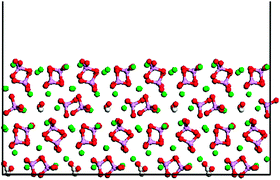Probing the surface structure of hydroxyapatite using NMR spectroscopy and first principles calculations
Abstract
The surface characteristics of hydroxyapatite (HA) are probed using a combination of

* Corresponding authors
a Department of Earth Sciences, University of Cambridge, Cambridge, UK
b Department of Chemistry, University of Cambridge, UK
c School of Physics and Astronomy, University of St Andrews, St Andrews, UK
d Department of Materials Science and Metallurgy, University of Cambridge, Cambridge, UK
The surface characteristics of hydroxyapatite (HA) are probed using a combination of

 Please wait while we load your content...
Something went wrong. Try again?
Please wait while we load your content...
Something went wrong. Try again?
H. Chappell, M. Duer, N. Groom, C. Pickard and P. Bristowe, Phys. Chem. Chem. Phys., 2008, 10, 600 DOI: 10.1039/B714512H
To request permission to reproduce material from this article, please go to the Copyright Clearance Center request page.
If you are an author contributing to an RSC publication, you do not need to request permission provided correct acknowledgement is given.
If you are the author of this article, you do not need to request permission to reproduce figures and diagrams provided correct acknowledgement is given. If you want to reproduce the whole article in a third-party publication (excluding your thesis/dissertation for which permission is not required) please go to the Copyright Clearance Center request page.
Read more about how to correctly acknowledge RSC content.
 Fetching data from CrossRef.
Fetching data from CrossRef.
This may take some time to load.
Loading related content
